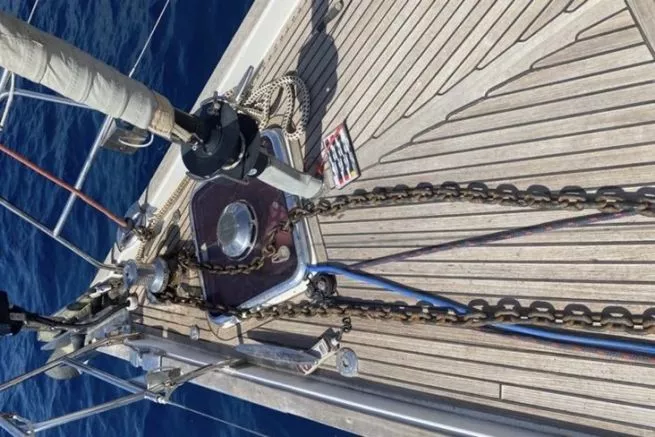Understanding Electric Windlass Issues
Electric windlasses are essential for smooth sailing, streamlining the process of anchoring and weighing anchor. However, they can sometimes falter, leaving sailors grappling with frustration during critical moments. This article explores common problems encountered with electric windlasses and offers practical solutions to restore functionality. Understanding these issues is vital, particularly for those who love the freedom and adventure that sailing offers.
At GetBoat, there is a constant watch on innovations and solutions related to sailing and coastal getaways. Emphasizing the joy of leisure and a passion for the ocean, GetBoat supports the notion of choosing one’s course without limits, allowing sailors to find the perfect vessel that matches their needs and aspirations.
Identifying the Problem with Your Windlass
A recent nautical journey revealed that after a month of summer sailing, one crew faced unexpected challenges when their electric windlass stopped working just as they were about to anchor. Finding themselves manually hoisting the anchor with a rope and winches was not only laborious but a stark reminder of how critical a functioning windlass is. Upon returning to port, it was time to diagnose the problem.
Step 1: Inspecting the Windlass Engine
The first action taken was a thorough inspection of the windlass engine. After fifteen years of reliable service, signs of corrosion emerged, indicating that replacement was necessary. Following the arrival of a new engine, the installation process commenced, including disassembly and reconnecting the components. It’s advisable to take pictures during disassembly to ensure everything goes back in the right place.
Upon installing the new engine, it became evident that the stainless steel threaded rods required adjustment, as they interfered with the functioning of the engine. Cutting them down was necessary to avoid contact. Additionally, replacing the control box that came with the engine was a wise decision, although testing revealed that even after these changes, the windlass was still unresponsive.
Step 2: Evaluating the Control System
With the windlass still non-functional, attention turned to the control system. The Quick remote control, which allows for raising and lowering the anchor, needed assessment. Upon opening it, damaged cables and corroded connections appeared, necessitating repairs. Using specific tools to strip the wires and cleaning the corrosion with a metal brush proved effective. To ensure a solid connection, electric cables were welded to the plug after confirming the circuit breaker was functioning correctly.
Despite these efforts, the windlass refused to budge, prompting thoughts of switching to a manual windlass for its simplicity.
Step 3: Checking the Relay
One of the critical components to examine was the electromechanical relay, an essential link in the power distribution chain. If the motor and control systems were operational, the relay itself might be malfunctioning. After deciding to replace the relay and conducting another test, success finally arrived—the windlass was operational once again.
Enhancing Safety with Windlass Relief Techniques
Using a windlass can become precarious in rough seas. Implementing preventative measures, such as the Iron Hand, known as a mooring hook, can significantly enhance safety at anchor. This device relieves tension on the windlass, providing an additional layer of security against inclement weather. Multiple installation techniques exist, such as with two mooring lines or through a davit. Securing to the reinforced cleats on the boat ensures stability during challenging conditions.
The Iron Hand not only mitigates wear on the windlass but ensures that chain unwinding is avoided during unexpected turbulence, safeguarding the crew during squalls.
Key Takeaways for Sailors
Addressing electric windlass issues may seem daunting, but systematic troubleshooting offers valuable insights into maintaining a safe and enjoyable sailing experience. Understanding the intricate relationship between components enhances knowledge, ultimately reaffirming the bond sailors have with their vessels. Experiences at sea often serve as lessons, reminding us of the multifaceted nature of sailing that extends beyond merely navigating the waters.
Exploring new destinations while embracing local cultures, flavors, and rhythms create profound experiences that enrich every voyage. Each waterway speaks volumes about its surroundings, much like the local cuisine or architecture. If the ocean beckons you for your next trip, consider the benefits of renting a boat to immerse yourself fully in the adventure. Every bay, inlet, and lagoon offers a unique story waiting to unfold, beckoning exploration. Discover more at GetBoat.com.
By staying engaged with developments in the sailing world and understanding the intricacies of equipment like electric windlasses, sailors lay a solid foundation for enjoyable voyages. GetBoat is committed to supporting this journey by offering user-friendly solutions for booking and renting boats—be it a yacht, sailboat, or charter—enabling unforgettable experiences on the sea. Transparency and convenience are core values that elevate GetBoat’s services, ensuring that all eager adventurers can easily find the ideal vessel for their next journey.
To sum up, managing an electric windlass effectively involves knowing how to troubleshoot common issues, inspecting vital components, and implementing safety measures that enhance overall sailing experiences. Being well-equipped with this knowledge sets sailors on the right course, making their nautical journeys all the more enjoyable and adventurous.


